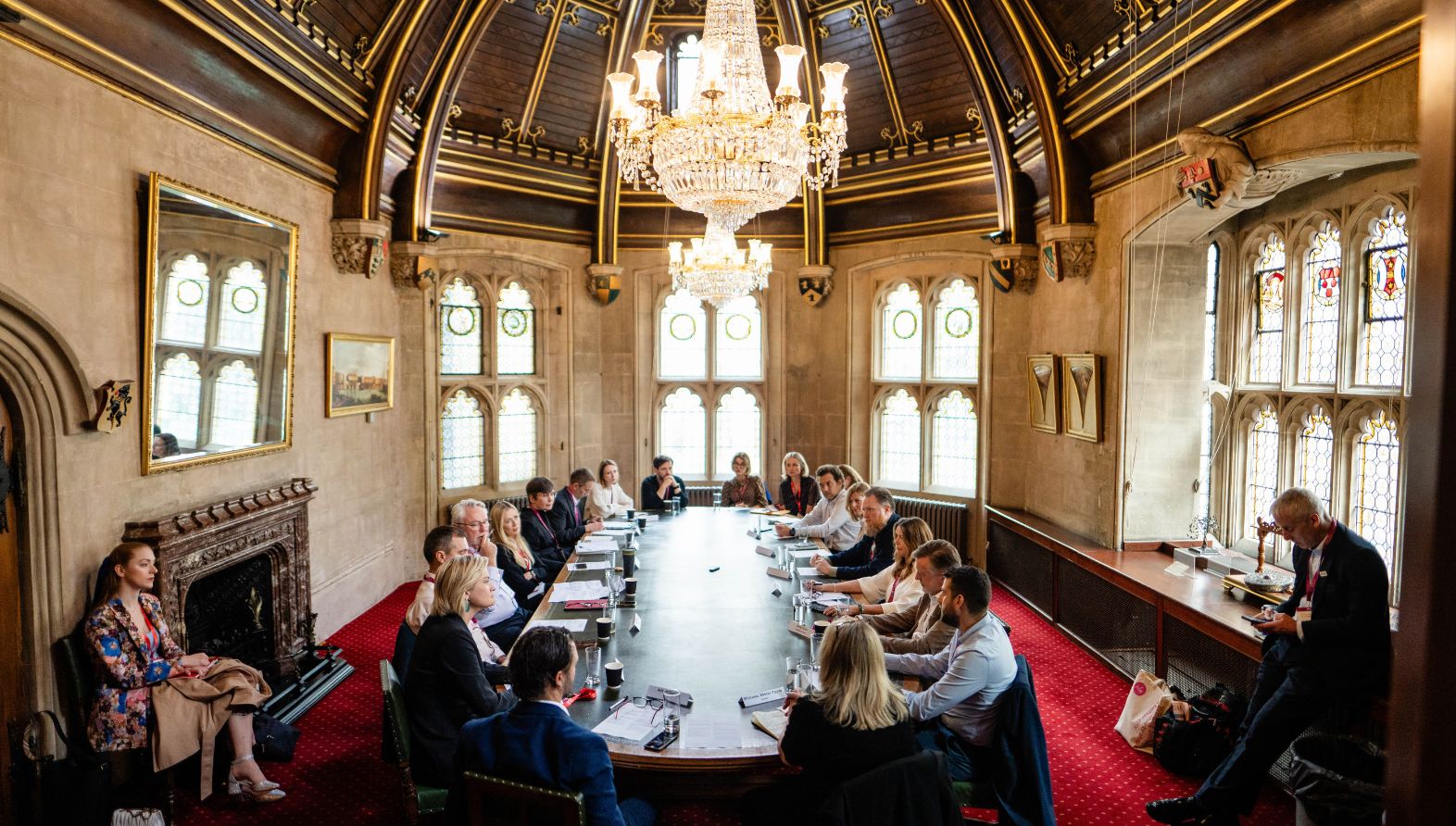
Collaboration and Vision: The Role of BIDs and Great Estates in Shaping the Future of London
For centuries, London’s Great Estates have traditionally led the long-term stewardship, public realm and placemaking strategies of some of London’s most successful districts.
However, in the West End, where ownership is fragmented, Heart of London Business Alliance’s (HOLBA) role is unique in playing a part in guiding the area’s stewardship, which covers 36.7 hectares of prime London real estate and is worth £10 billion to the UK economy.
At this year’s London Real Estate Forum, HOLBA convened a roundtable discussion with key players involved in the development and management of BIDs and Great Estates to explore what the future of the West End could look like and how, as custodians, Business Improvement Districts (BIDs), property owners and other bodies, could mirror and take on the principles of a Great Estate.
The conversation centered on the ongoing role these entities play in shaping the future of London’s commercial and cultural landscape. With London at a pivotal moment, where innovative industries look to find a home amongst the city’s heritage buildings, the synergy between these groups is essential to fostering a sustainable, vibrant future.
The Evolution of BIDs: From Business to Community
The session began with acknowledgement that BIDs have evolved significantly since their inception. Initially focused on business interests, BIDs now engage with a broader range of stakeholders, including residents, to create a cohesive vision for urban spaces. As one participant pointed out, BIDs provide an efficient way for local authorities to engage with multiple stakeholders, ensuring effective dialogue around urban development.
HOLBA’s Head of Strategic Relations Angela Reed emphasized the importance of an ecosystem that connects property owners, local authorities, and other stakeholders, promoting collaborative place-shaping. As HOLBA now represents a significant portion of the property-owned BIDs in the UK, its strategy focuses on long-term protection and growth, particularly in emerging sectors like CreaTech and the Experience Economy. In particular, efforts have focused on supporting the cultural sectors and maintaining the economic vitality of London, contributing £10 billion to the UK’s GDP.
HOLBA Deputy CEO, Mark Williams echoed these sentiments, stating that HOLBA’s upcoming real estate foresights research is helping BIDs understand their role better, identifying key opportunities and challenges for future development.
BIDs vs. Great Estates: Short-Term vs. Long-Term Visions
Throughout the discussion, it became evident that there are notable differences between BIDs and Great Estates. BIDs often operate with a shorter-term focus due to their cyclical, five-year election processes. In contrast, Great Estates tend to have a long-term, generational approach to managing their properties, giving them the flexibility to absorb risks and experiment with innovative ideas.
However, as several participants noted, collaboration between BIDs and Great Estates can drive progress faster and more effectively. While BIDs benefit from hyperlocal, on-the-ground knowledge of landowners, Great Estates can take advantage of BIDs’ ability to coordinate and unify stakeholder interests. It was noted that many areas in London have flourished thanks to these coordinated efforts, even in the absence of a single landowner.
Challenges and Opportunities for the Future
Despite the successes, the group also explored several challenges facing BIDs. One recurring theme was the need for modernisation—particularly with election processes. Aligning BID operations with public sector frameworks was identified as a critical step in ensuring their continued success. Additionally, the importance of demonstrating value through more sophisticated Key Performance Indicators (KPIs) was stressed. BIDs must get smarter about proving their tangible impact to stakeholders.
Public realm improvements were another point of debate. While some participants questioned the ability of BIDs to fund such projects, others noted successful examples where private and public collaboration coordinated by BIDs has led to significant investments in urban spaces.
Sustainability was also a key topic, with discussions focusing on how BIDs can align long-term environmental goals within their strategies. The unique challenges of meeting sustainability targets were highlighted, particularly in historic buildings, but it was noted that collaboration between organisations could offer valuable lessons.
The Importance of Clear Vision and Coordination
A standout out theme from the discussion was the importance of clear communication and vision, particularly in a city as complex as London. It was observed that while some international investors are unfamiliar with London’s intricacies, BIDs can help demystify these complexities by presenting a unified vision. This is especially important as BIDs continue to evolve as custodians of their areas, balancing commercial interests with long-term placemaking strategies.
As the discussion concluded, there was a shared understanding that the future success of London’s districts lies in the hands of both BIDs and Great Estates. Collaboration, clear communication, and a shared commitment to long-term sustainability and innovation will be essential to ensure that London remains a world-leading destination.
Thank you to those in attendance:
(Chair) Robert Gordon Clark, Partner & Senior Advisor, London Communications Agency
Mark Williams, Deputy CEO, Heart of London Business Alliance
Angela Reed, Head of Strategic Relations, Heart of London Business Alliance
Michaela Winter-Taylor, Senior Associate, Cities & Urban Design, Gensler
Sarah Yates, Research Manager, Future of London
Adam Challis, Head of Research and Strategy, JLL
Kristy Landsdown, Head of Development, The Crown Estate
Debbie Jackson, Executive Director of Regeneration, Economy and Planning, Westminster City Council
Charles Begley, Chief Executive, WPA
Andy Hicks, Estates Director, Shaftesbury Capital
Yiannis Sophocleous, Account Director, Concilio
Simon Saint, Principal, Woods Bagot
Suzanne Benson, Head of Real Estate, Trowers and Hamlins
Tim Bystedt, Head of Planning and Design, Criterion Capital
Lucy Devereux, Associate , AND London
To read more about the Insights reports produced for the Heart of London area, sign up here: https://holba.london/data-insights/




